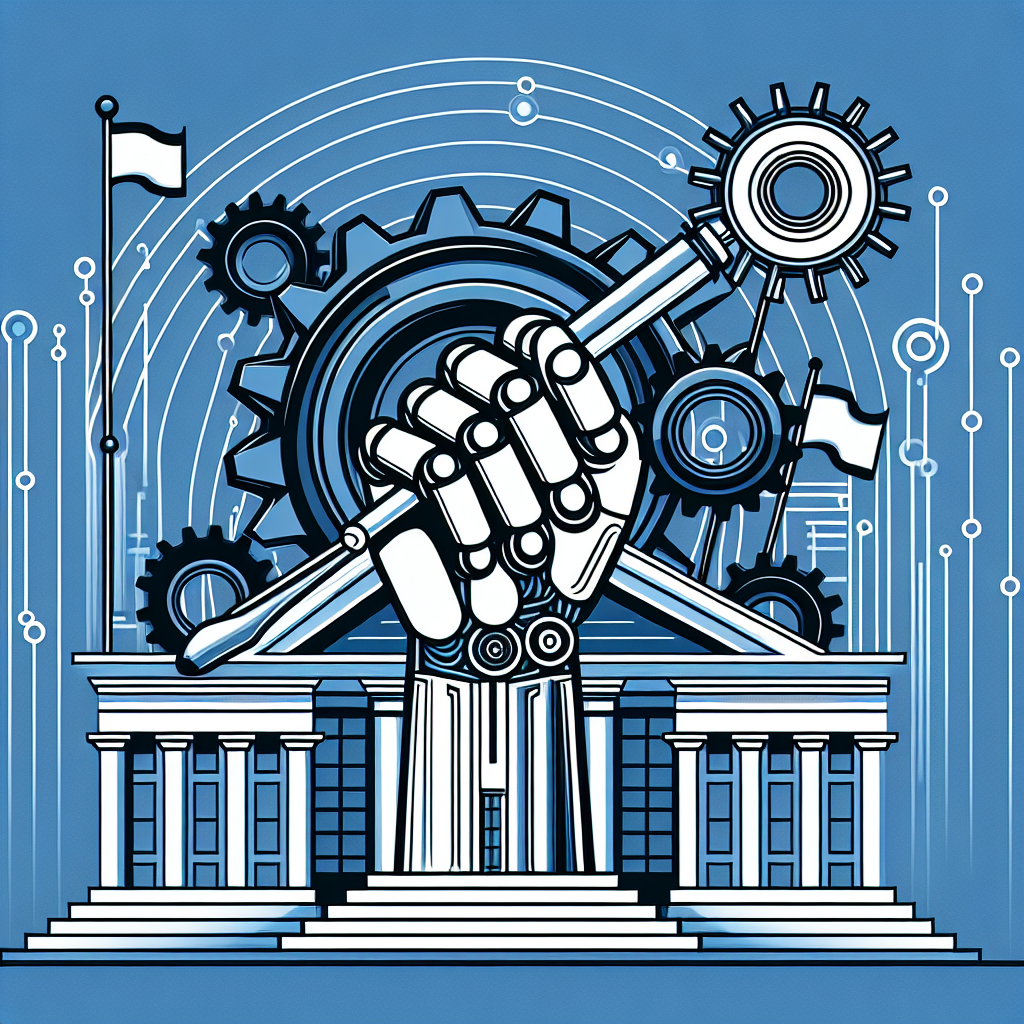The Role of AI in Reducing Government Bureaucracy and Streamlining Processes
In recent years, there has been a growing interest in the use of artificial intelligence (AI) to streamline processes and reduce bureaucracy in various industries. One area where AI has the potential to make a significant impact is in government operations. By leveraging AI technologies, governments can automate routine tasks, improve decision-making processes, and enhance service delivery to citizens.
AI has the potential to transform the way governments operate by providing efficient and effective solutions to complex problems. From improving public services to reducing inefficiencies, AI can help governments deliver better outcomes for their citizens. In this article, we will explore the role of AI in reducing government bureaucracy and streamlining processes.
1. Automation of Routine Tasks
One of the key ways AI can reduce government bureaucracy is by automating routine tasks. Many government processes involve repetitive and time-consuming activities that can be easily automated using AI technologies. For example, AI-powered chatbots can handle citizen inquiries, process applications, and provide information without the need for human intervention.
By automating routine tasks, governments can free up resources and reduce the burden on staff, allowing them to focus on more complex and high-value activities. This can lead to increased efficiency, improved service delivery, and cost savings for government agencies.
2. Improved Decision-Making Processes
AI can also play a significant role in improving decision-making processes within government agencies. By analyzing vast amounts of data, AI algorithms can identify patterns, trends, and insights that can inform better policy decisions and resource allocation. For example, AI can help government agencies predict demand for services, identify areas of inefficiency, and optimize resource allocation to improve service delivery.
By providing real-time insights and recommendations, AI can enable government agencies to make data-driven decisions that are more accurate and timely. This can lead to better outcomes for citizens and improved performance for government agencies.
3. Enhancing Service Delivery
Another way AI can reduce government bureaucracy is by enhancing service delivery to citizens. AI technologies can help governments provide more personalized, efficient, and responsive services to citizens. For example, AI-powered virtual assistants can help citizens navigate government services, answer inquiries, and provide personalized recommendations.
By leveraging AI technologies, governments can improve the overall citizen experience and increase satisfaction with government services. This can lead to higher levels of trust in government institutions and increased engagement with public services.
FAQs
Q: How can AI help reduce government bureaucracy?
A: AI can help reduce government bureaucracy by automating routine tasks, improving decision-making processes, and enhancing service delivery to citizens. By automating repetitive tasks, governments can free up resources and reduce the burden on staff, leading to increased efficiency and cost savings. AI can also help governments make better decisions by analyzing data and providing real-time insights and recommendations. Additionally, AI can enhance service delivery by providing more personalized, efficient, and responsive services to citizens.
Q: What are some examples of AI applications in government operations?
A: Some examples of AI applications in government operations include AI-powered chatbots for citizen inquiries, predictive analytics for resource allocation, and virtual assistants for service delivery. AI technologies can also be used for fraud detection, risk assessment, and compliance monitoring in government agencies.
Q: What are the benefits of using AI in government operations?
A: The benefits of using AI in government operations include increased efficiency, improved decision-making, enhanced service delivery, and cost savings. By leveraging AI technologies, governments can automate routine tasks, make better decisions, and provide more personalized services to citizens. This can lead to better outcomes for citizens and improved performance for government agencies.
In conclusion, AI has the potential to transform the way governments operate by reducing bureaucracy and streamlining processes. By automating routine tasks, improving decision-making processes, and enhancing service delivery, AI can help governments deliver better outcomes for their citizens. As governments continue to embrace AI technologies, we can expect to see increased efficiency, improved service delivery, and cost savings in government operations.

